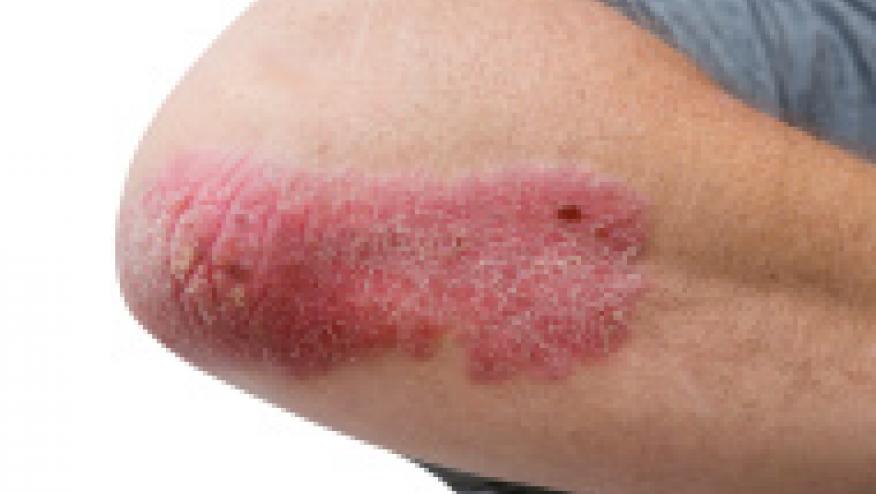Predicting Psoriatic Arthritis in Psoriasis: How Close Are We? Save

Psoriatic arthritis (PsA) affects approximately 30% of patients with psoriasis (PsO), and diagnostic delays are associated with worse prognosis, making early detection crucial. At EULAR 2025, several studies highlighted progress in prediction strategies.
Svedom et al. (OP0178)
Using data from 672 patients in the Stockholm Psoriasis Cohort, a prospective inception cohort study that enrolled individuals at the first onset of PsO, the authors developed and internally validated models to: predict who should be referred to rheumatology, predict PsA development in subclinical PsA cases, and identify key predictors of future PsA. The study started in 2000 and enrolled 672 adult participants. In 9,255 observation years, 195 participants (29.0%) were diagnosed with PsA , corresponding to an incidence of 21.1 events per 1,000 person years.
For the prediction model identifying patients who would benefit from rheumatology referrals, high PsA risk patients were those with HLA-B27+ with arthralgia (86% progressed); low risk patients were those with no arthralgia or pain history (5.5%).
For the prediction of PsA in patients with subclinical PsA, key predictors were HLA-B27, history of uveitis, axial enthesial pain, peripheral enthesial pain, male sex, tender joint count, hs-CRP, and VAS-health.
Regarding predictors of a future PsA diagnosis, clinical factors previously related to PsA, such as arthralgia, fatigue, and BMI, were associated with PsA. Broad markers of systemic inflammation, such as SAA, HS-CRP, and GlycA, were also associated with PsA. In contrast, more narrow markers such as IL-6 or IL-17a previously linked to PsA were not. Two lipid markers (HDL size and LDL particle count) were associated with PsA, and in terms of genotypes, HLA-cw6 was associated with lower and HLA-B27 with higher risk of future PsA.
Zabotti et al. (POS0299)
The group assessed the risk of progression from mild psoriasis with subclinical PsA to clinically diagnosed PsA. Patients were recruited from rheumatology and dermatology clinics across three centres in Italy. They clinically excluded prior or current arthritis, dactylitis, enthesitis, or inflammatory back pain. Subclinical PsA was defined as the presence of arthralgia with a recent onset (≤12 months) of non-inflammatory joint and/or entheseal pain, without any clinical or historical signs of inflammatory arthritis and without fulfilling the CASPAR criteria for PsA.
The study prospectively followed 141 patients with mild psoriasis and subclinical PsA for a mean duration of 3.4 years (SD: 1.91). During follow-up, 26 patients (18.4%) progressed to clinical PsA, resulting in an overall incidence rate of 5.41 per 100 person-years (95% CI: 3.68–7.95). The risk of progression was highest during the first year. Interestingly, 15 patients (10.6%) experienced spontaneous regression of their arthralgia.
Significant predictors for PsA progression included older age (OR 1.05, 95% CI: 1.01–1.09), HAQ score >0.25 (OR 4.20, 95% CI: 1.61–10.99), and a tender joint count >0 (OR 10.69, 95% CI: 1.38–82.62). Among ultrasound findings, the presence of entheseal erosions was strongly associated with progression (OR 3.67, 95% CI: 1.06–12.68), while PD synovitis showed a trend toward increased risk (OR 1.88, 95% CI: 0.79–4.47).
Corte et al. (OP0174)
The study evaluated the role of a novel functional imaging technique to assess the association of increased fibroblast activation detected by 68Gallium-labelled Fibroblast Activation Protein Inhibitor-04 (68Ga-FAPI-04)-PET/CT (68Ga-FAPI-04 PET/CT) with the onset of PsA in a German longitudinal cohort of PsO patients presenting with arthralgia.
They analysed 44 patients referred to exclude the presence of PsA and excluded patients with a history or clinical signs of arthritis who fulfilled the CASPAR criteria.
Compared to patients without uptake, 68Ga-FAPI-04-positive patients had a significantly higher DAS28-CRP (p=0.04). This was driven by numerically higher levels of referred pain and higher CRP levels, while the number of tender joints was similar.
During a mean follow-up of 42 (±41) weeks, PsA developed in 18 (41%) of the patients which included 17/36 (47%) patients who had shown FAPI uptake at baseline as opposed to only 1/8 (13%) patients without FAPI uptake ((HR 6.55, 95%CI 0.85-50.8), log-rank p-value=0.04).
They concluded that 68Ga-FAPI-04-PET/CT imaging may be particularly useful to determine which PsO patients are most likely to benefit from closer rheumatological monitoring and possibly from preventive interventions.
Conclusion
Prediction of PsA in PsO is increasingly feasible through clinical, genetic, imaging, and biomarker tools. HLA-B27, arthralgia, systemic inflammation, and novel imaging (e.g. FAPI PET/CT) stand out as promising predictors, supporting more targeted referrals and early interventions.










If you are a health practitioner, you may Login/Register to comment.
Due to the nature of these comment forums, only health practitioners are allowed to comment at this time.